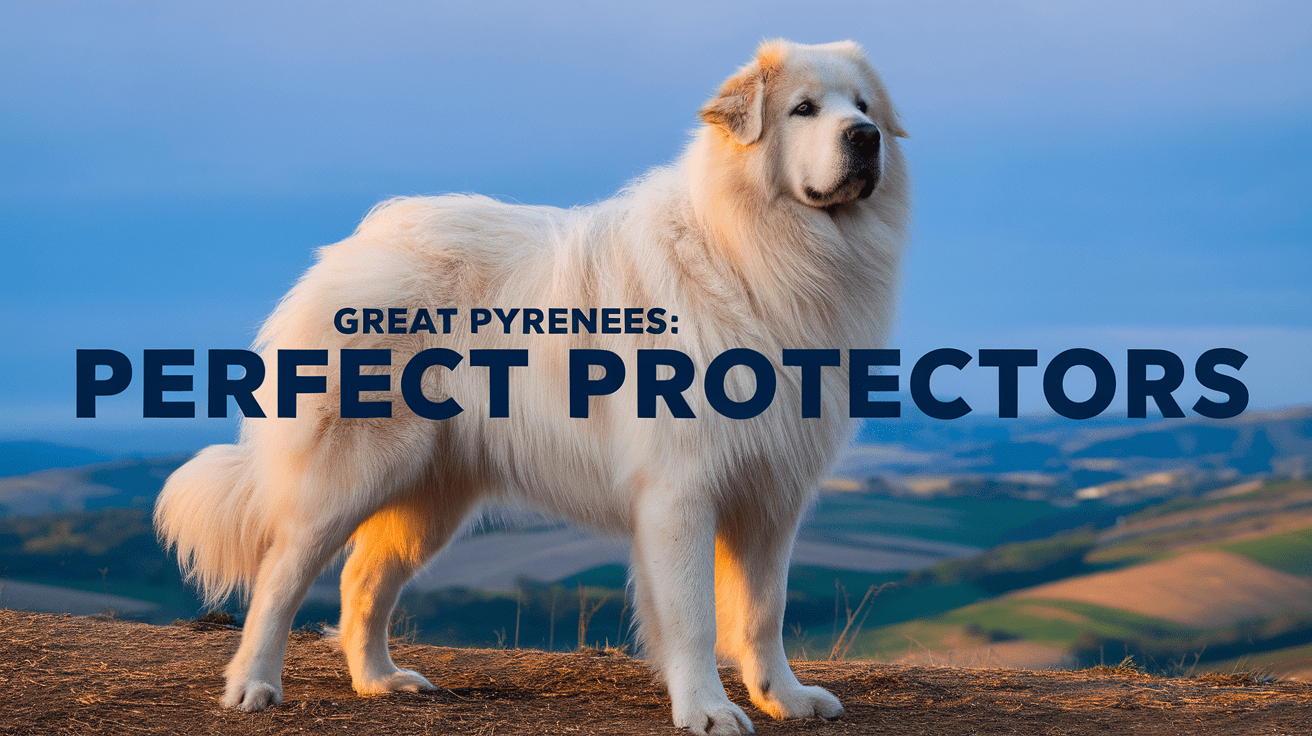Great Pyrenees Guard Dog Key Takeaways
- ✓ Ancient Heritage: Great Pyrenees have been protecting flocks for over 11,000 years, with natural guarding abilities deeply embedded in their DNA.
- ✓ Natural Guardians: These dogs possess innate protective instincts, requiring minimal training to perform their guardian duties effectively.
- ✓ Physical Presence: Their impressive size (up to 120 pounds) and powerful bark serve as natural deterrents to potential threats.
- ✓ Intelligent Protection: Great Pyrenees display calculated, measured responses to threats rather than aggressive behavior.
- ✓ Training Approach: Success comes from working with their natural instincts rather than trying to override them with conventional training methods.
Looking for the ultimate livestock guardian? The Great Pyrenees might just be your perfect match! As a veterinarian who’s worked with countless working dogs, I can confidently say these magnificent giants are nature’s elite security system. According to the American Kennel Club, Great Pyrenees have been protecting flocks in the Pyrenees Mountains for over 11,000 years – talk about a proven track record!
These majestic gentle giants combine the intimidating presence of a polar bear with the heart of a guardian angel. In my 15 years of veterinary practice, I’ve seen these incredible dogs transform from lazy-looking couch potatoes by day to vigilant protectors by night. Whether you’re a farmer looking to protect your livestock or a homeowner seeking a reliable family guardian, this comprehensive guide will walk you through everything you need to know about the breed that’s been dubbed the “Ultimate Guardian.”
Understanding the Great Pyrenees History and Natural Guarding Instincts
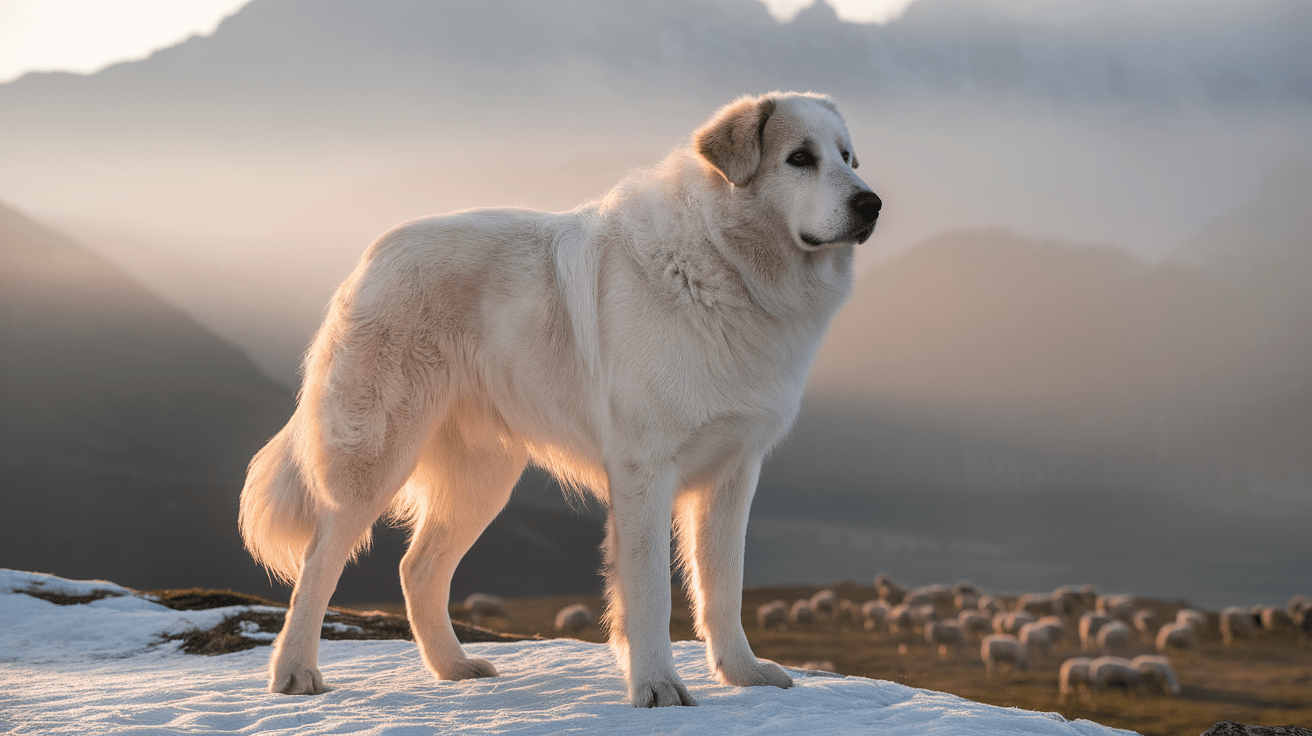
Throughout my veterinary career, I’ve been consistently amazed by the Great Pyrenees’ innate guarding abilities. These remarkable dogs carry centuries of protective instincts in their DNA, making them naturally adept at their guardian role without extensive training.
Ancient Origins as Mountain Guardians
The Great Pyrenees’ story begins in the rugged Pyrenees Mountains between France and Spain. According to The Great Pyrenees Club of America, fossils of similar mountain dogs date back to 1800-1000 BC, suggesting these magnificent guardians have been perfecting their craft for millennia. Their thick, weather-resistant coats and powerful builds evolved specifically for mountain work, allowing them to patrol in harsh weather conditions that would send other breeds seeking shelter.
Traditional Role in Livestock Protection
In my practice, I often share with farmers how the Great Pyrenees’ traditional working methods still shine through in modern dogs. These natural guardians developed unique protection strategies:
• Patrolling perimeters in systematic patterns
• Positioning themselves between threats and their charges
• Using their impressive bark as a first line of defense
I remember treating a Great Pyrenees named Zeus who perfectly demonstrated these ancestral traits. Despite never being trained for livestock protection, he naturally started guarding his family’s chickens from coyotes, positioning himself strategically and patrolling the coop area with remarkable dedication.
Modern Adaptation to Family Protection
What truly sets Great Pyrenees apart is their remarkable ability to adapt their ancient guarding instincts to modern family life. They view their human family as their “flock,” applying the same gentle yet vigilant protection they’ve shown livestock for centuries. I’ve observed countless Pyrs seamlessly transition from watching over sheep to becoming devoted family guardians.
Their protective nature is selective and intelligent – they don’t react to every passing squirrel but remain highly alert to genuine threats. This discernment, honed over thousands of years in the mountains, makes them exceptionally reliable family protectors while maintaining their legendary calm demeanor.
Key Characteristics That Make Great Pyrenees Excellent Guard Dogs
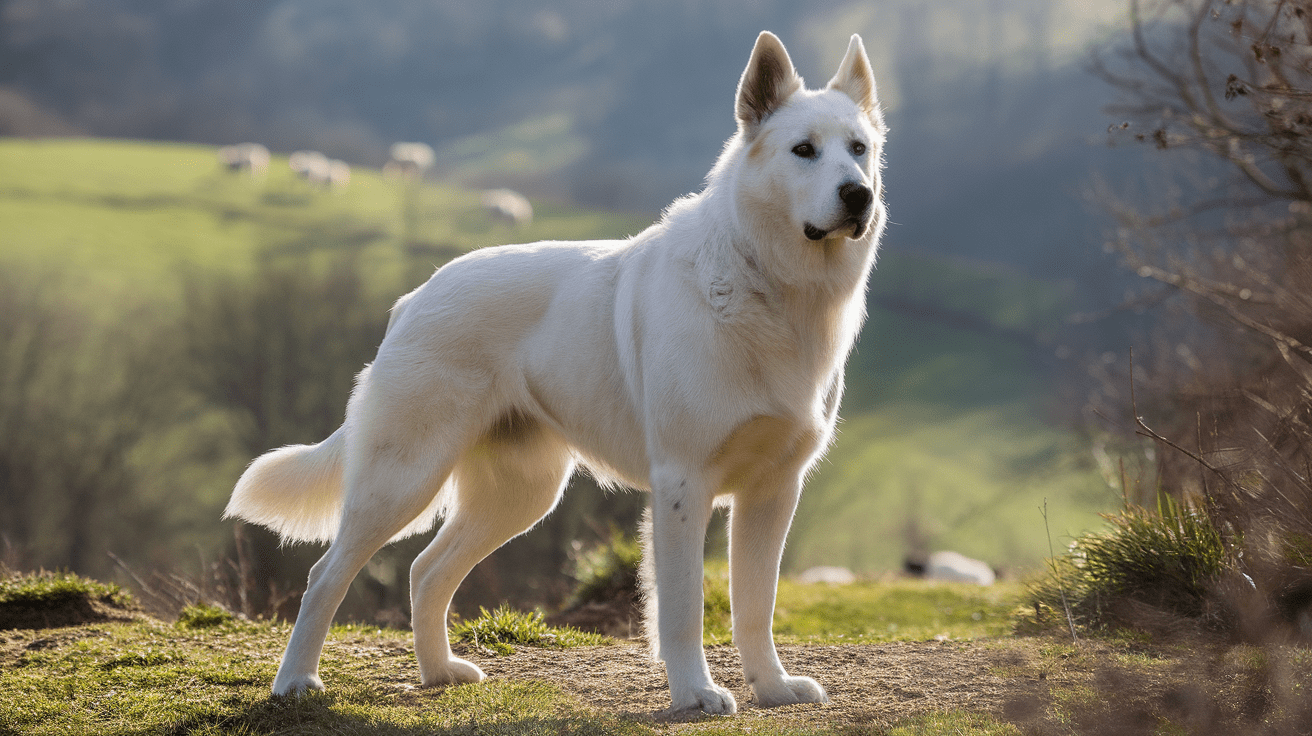
As someone who’s treated hundreds of Great Pyrenees over my veterinary career, I can attest that these dogs possess unique characteristics that make them exceptional guardians. According to the National Great Pyrenees Rescue, these dogs have a 95% success rate as livestock guardians – a testament to their natural protective abilities.
Physical Attributes and Intimidating Presence
The Great Pyrenees’ physical presence alone is often enough to deter threats. These magnificent dogs typically stand 25-32 inches tall and can weigh up to 120 pounds. In my practice, I often joke that they’re like having a friendly polar bear on guard duty. Their key physical advantages include:
• A thick, weather-resistant double coat that enables year-round outdoor work
• Powerful, muscular build that combines strength with agility
• An imposing bark that can be heard for miles
Intelligence and Independent Decision Making
What truly fascinates me about Great Pyrenees is their remarkable cognitive abilities. These aren’t dogs that blindly follow commands – they’re independent thinkers. I remember one patient, Luna, who detected a gas leak in her family’s home at 3 AM and systematically woke each family member until everyone was safely outside.
Their strategic thinking abilities include:
• Assessing situations before taking action
• Making autonomous decisions about threat levels
• Adapting their guarding style to different circumstances
Protective Instincts and Territorial Behavior
The Great Pyrenees’ protective instincts are incredibly refined. Unlike some guard breeds that may be overly aggressive, these dogs display what I call intelligent protection. They’re naturally territorial but in a calculated way. In my experience treating working Pyrs, I’ve observed they typically:
First assess potential threats through careful observation. Then they often issue warning signals like positioning themselves between the threat and their charge. Only if necessary will they escalate to more assertive defensive behaviors. This measured approach makes them particularly safe guardians for families with children while maintaining their effectiveness as protectors.
Training Your Great Pyrenees for Guard Dog Duties
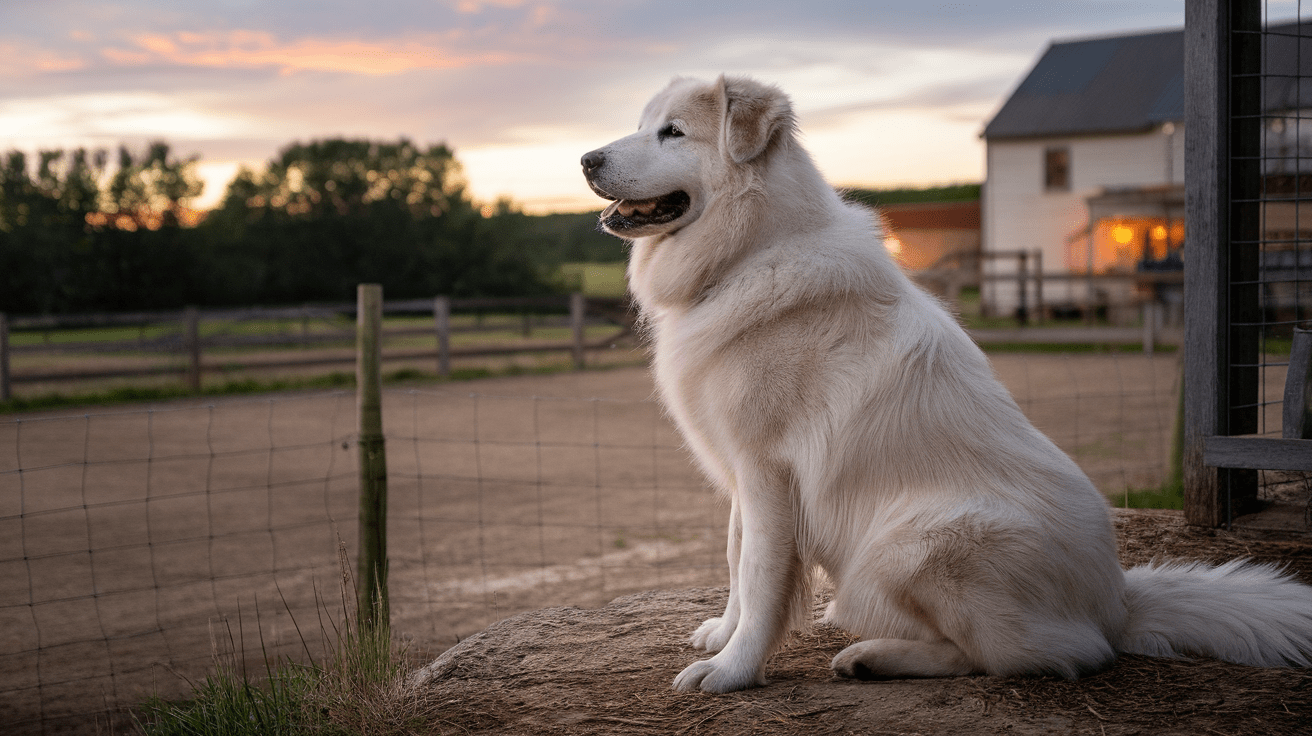
Training a Great Pyrenees for guard duties is quite different from training other breeds. According to the Great Pyrenees Club of America, about 85% of successful guarding behaviors in these dogs are instinctual rather than trained. As a veterinarian who’s guided numerous families through this process, I’ve learned that success lies in working with their natural instincts rather than against them.
Early Socialization Requirements
I always tell my clients that socialization is crucial but must be balanced with the dog’s guardian nature. One memorable case was a Pyr puppy named Bear, who initially showed excessive wariness. Through careful socialization, he developed into a confident guardian who could distinguish between welcome guests and actual threats.
Key socialization elements include:
• Exposure to various people, animals, and situations during the critical 8-16 week period
• Positive interactions with livestock if intended for farm work
• Controlled introduction to different environments and sounds
Essential Commands and Boundaries
When it comes to commands, Great Pyrenees respond best to what I call the “partnership approach.” They’re not typically eager to please like some breeds – they need to understand the why behind commands. In my experience, successful training includes:
• Teaching a rock-solid recall command (though expect some independence)
• Establishing clear property boundaries
• Working on “leave it” and “stay” commands specific to their guarding context
Remember, these dogs have been making independent decisions for thousands of years. I often compare training a Great Pyrenees to diplomacy rather than dictatorship – you’re negotiating with an intelligent, independent partner.
Working with Their Natural Instincts
The most successful guard dog training programs I’ve seen embrace the Great Pyrenees’ natural tendencies. For instance, rather than trying to stop their patrolling behavior, we channel it into specific routes and times. One of my clients cleverly used her Pyr’s natural inclination to patrol by creating designated observation points around her property.
Effective training methods include:
• Reinforcing natural protective behaviors with praise
• Allowing supervised decision-making opportunities
• Teaching boundaries while respecting their need to guard
In my veterinary practice, I’ve seen that patience and consistency are key. These magnificent guardians aren’t like other dogs who might learn commands in a few sessions. They’re complex thinkers who need time to process and accept their training. The result, however, is worth the wait – a reliable, intelligent guardian who can make sound decisions even in your absence.
Common Challenges and Solutions in Great Pyrenees Guard Work
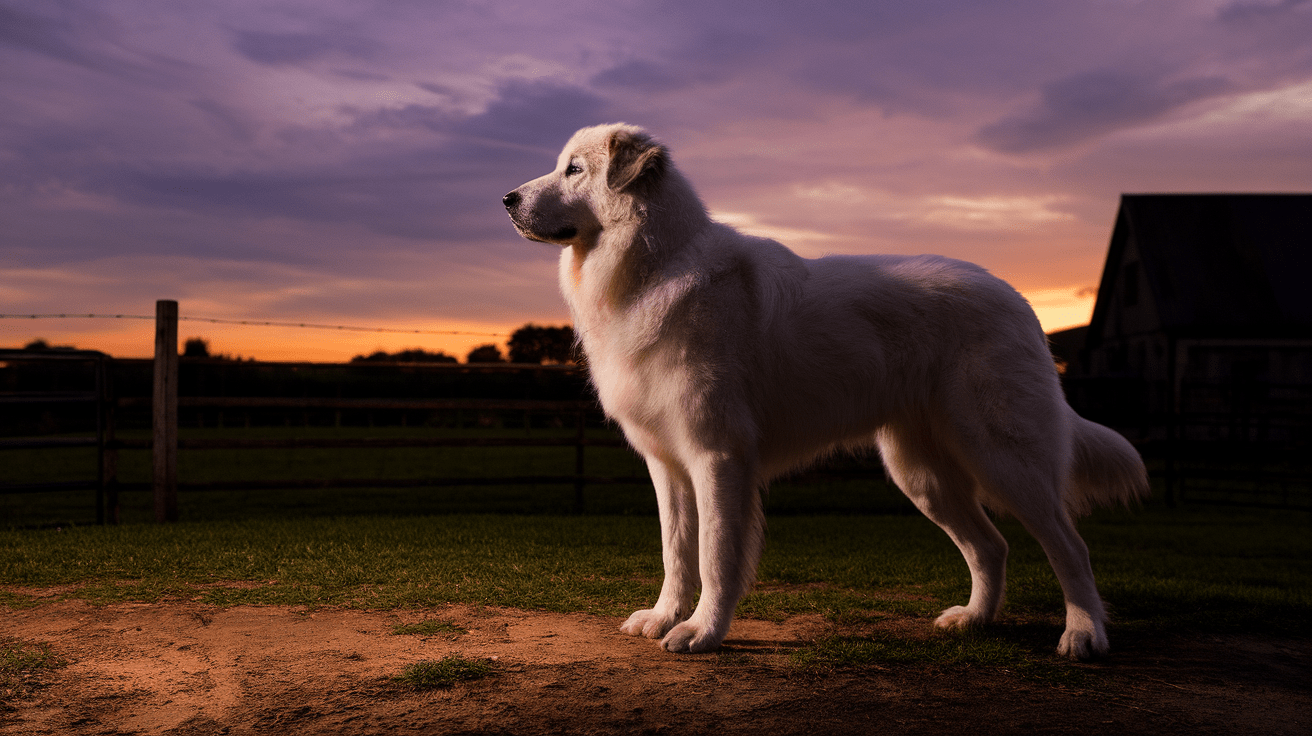
Through my years of veterinary practice, I’ve noticed that while Great Pyrenees are exceptional guardians, they come with unique challenges. According to the National Great Pyrenees Rescue, approximately 60% of Pyr owners report nighttime barking as their primary concern. Let’s address these challenges and their solutions.
Dealing with Nighttime Barking
As a vet who’s fielded countless calls about nocturnal barking, I can tell you this behavior is deeply ingrained. One of my clients, Sarah, initially struggled with her Pyr, Luna, who treated every nighttime rustle as a potential threat. We developed a successful strategy that balanced Luna’s guarding instincts with the need for quiet:
• Creating a designated “observation post” where barking was more acceptable
• Using positive reinforcement for “quiet” commands
• Establishing a routine that included active guard time and rest periods
Managing Independent Streak
Great Pyrenees are renowned for their independent thinking, which can sometimes translate to stubbornness. I often tell my clients to think of their Pyr as a responsible teenager – capable of making good decisions but occasionally testing boundaries. This independence is actually crucial for their guard work, but it needs proper channeling.
Effective management strategies include:
• Setting clear boundaries while respecting their decision-making abilities
• Creating structured routines that allow for independent patrol time
• Using positive reinforcement rather than forceful correction
Addressing Property Patrolling Habits
One of the most challenging aspects of Great Pyrenees ownership is managing their intense drive to patrol their territory. I remember treating a Pyr named Max who had worn a path along his property’s perimeter – a perfect example of their dedication to patrol duty. While this behavior is essential for their guard work, it needs to be managed to prevent escape attempts or excessive territory expansion.
Success strategies I’ve seen work include:
• Installing secure fencing at least 6 feet high
• Creating designated patrol routes within safe boundaries
• Using landscape features to naturally direct patrol patterns
The key to managing these challenges lies in understanding that they’re not really “problems” but rather features of the breed’s guardian nature. Just as you wouldn’t try to stop a retriever from retrieving, we shouldn’t try to completely suppress these natural guarding behaviors. Instead, focus on channeling them appropriately while maintaining the essential protective qualities that make Great Pyrenees such remarkable guardians.
Caring for Your Great Pyrenees Working Guard Dog
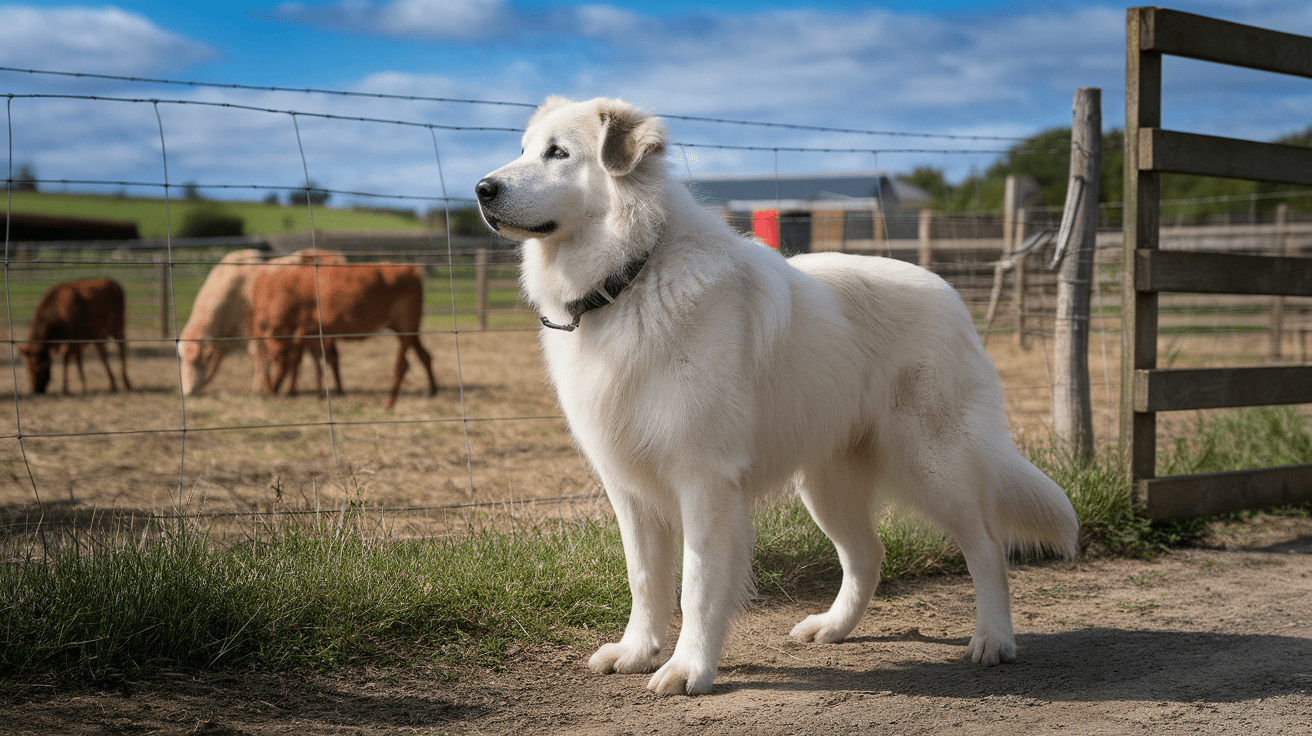
As a veterinarian specializing in working dogs, I’ve learned that caring for a Great Pyrenees guardian requires special attention to their unique needs. According to the Merck Veterinary Manual, working guard dogs require up to 50% more calories than their non-working counterparts. Let’s explore how to keep these magnificent guardians in peak condition.
Specific Nutritional Requirements
Through my years of practice, I’ve noticed that working Pyrs have distinct nutritional needs. I remember treating a guardian Pyr named Atlas who was losing weight despite eating standard portions. After adjusting his diet to match his working lifestyle, he quickly regained his optimal condition.
Working Great Pyrenees require:
• Higher protein content (25-30%) for muscle maintenance
• Increased healthy fats for sustained energy
• Joint-supporting supplements like glucosamine and chondroitin
I often tell my clients to think of their working Pyr’s nutrition like fueling a heavy-duty truck – it needs premium fuel to perform its best.
Exercise and Rest Balance
One of the most common misconceptions I encounter is that working Pyrs need additional exercise beyond their guard duties. In reality, these dogs are masters of energy conservation. They operate on what I call the “conserve and burst” principle – staying relatively calm until action is needed.
A proper balance includes:
• Natural exercise through regular property patrols
• Designated rest periods during peak daylight hours
• Controlled play sessions that don’t interfere with guard duties
I’ve observed that working Pyrs naturally regulate their activity levels when given the freedom to do so. They’re like efficient security systems – always on but not always actively engaged.
Health Considerations for Working Dogs
Working Great Pyrenees face unique health challenges that require proactive management. In my practice, I emphasize preventive care to ensure these dedicated guardians can perform their duties comfortably and effectively.
Key health considerations include:
• Regular joint health monitoring and maintenance
• Frequent coat checks for matting and debris
• Special attention to paw pad care for continuous patrolling
I particularly emphasize weather adaptation needs. While these dogs are built for cold weather, they need special consideration during summer months. One of my clients created a brilliant solution by setting up cooling stations along her Pyr’s patrol route – a perfect example of adapting the environment to support the dog’s working needs.
Remember, a working Great Pyrenees is a significant investment in your property’s security. Proper care isn’t just about maintaining their health – it’s about protecting your investment in safety. When properly cared for, these remarkable guardians can provide years of reliable protection while maintaining their health and happiness.
Frequently Asked Questions About Great Pyrenees Guard Dogs
Conclusion
The Great Pyrenees stands as a testament to the perfect blend of natural instinct and protective capability. Through my years as a veterinarian, I’ve witnessed these magnificent guardians transform properties into secure havens and families into well-protected units. While they present unique challenges with their independent nature and specific care requirements, the benefits far outweigh any adjustments needed in caring for them. Their intelligence, natural protective instincts, and unwavering loyalty make them exceptional guardians for both livestock and families. If you’re considering a livestock guardian or family protector, remember that with proper training, care, and understanding of their unique traits, a Great Pyrenees can become your property’s most valuable security asset. These gentle giants truly embody the perfect balance of power and discretion in the world of guardian dogs.
While this article covers the essentials of Great Pyrenees as guard dogs, proper care is crucial for these magnificent guardians to perform at their best. For a complete understanding of Great Pyrenees care requirements, check out our detailed Ultimate Guide to Great Pyrenees: 15 Amazing Care Tips. This comprehensive resource covers everything from nutrition to grooming, helping you ensure your gentle guardian stays healthy and happy while protecting your home or livestock.

